Cool Facts About Saturn’s Icy Snowball Moon Rhea
‘Mother Of The Gods’
Discovered in 1672 by Giovanni Cassini, Rhea is the ninth-largest moon in the solar system, and the second-largest of Saturn (behind Titan). Rhea is one of the smallest objects to be in hydrostatic equilibrium on account of its 75% water-ice composition and is very similar to its neighbouring moons Dione and Tethys who also orbit close to Saturn. Rhea completes an orbit of Saturn every 4 ½ days.
Fast Summary Facts About Rhea!!
- Discovered: December 23rd 1672, by Giovanni Cassini
- Name: From Greek mythology, Rhea is the “mother of the gods”, sister and wife of Cronos (Saturn in Roman)
- Size: Diameter of 1,528 kilometres (949 miles)
- Moon Rank: 9th Largest in the solar system
- Orbit: Prograde and Circular
- Orbit Radius: 527,100 km from Saturn
- Orbital Period: 4 ½ days
- Orbital Speed: 8.48 km/sec
- Density: 1.236 g/cm3
- Surface Temperature: -174 °C (sunlight) to - 220 °C (shade)
- Surface: Water-ice
- Atmosphere: Tenuous (exosphere)
More Cool Fun Facts About Saturn’s Moon Rhea!
- Rhea was the third moon of Saturn to be discovered and one of four to be discovered by Giovanni Cassini (along with Tethys, Dione and Iapetus).
- Despite being discovered in 1672, it was initially called Saturn V (being the 5th moon from Saturn), but in 1847 its name was changed to Rhea to avoid confusion as more moons were discovered.
- Rhea is the second smallest body in the solar system, after the asteroid and dwarf planet Ceres, confirmed to be in hydrostatic equilibrium!
- Rhea is the second largest moon of Saturn, but is only 1/3rd the size of the largest moon Titan!
- Like many moons, Rhea is ‘tidally locked’ to Saturn as it orbits; meaning the same face of Rhea always faces Saturn. This is similar to Earth’s Moon!
- Surface temperatures on Rhea varies from a sunny side temperature of -174 °C ( -281 °F) while in the shade it gets as low as -220 °C (-364 °F)!
- Rhea's density is relatively low for a moon of this size, being only about 1.24 times that of liquid water. This suggests Rhea is 75% ice and 25% rocky material!
- Rhea’s high water-ice content is evident from its high reflectivity (Albedo).
- Rhea is similar to the moons Dione and Tethys; they are all small, cold and airless bodies. Although Rhea is more heavily cratered and therefore believed to have an older surface.
- There is evidence that Rhea is an undifferentiated moon, meaning the rock and water-ice is mixed (rather than all the rock at the core) so is more like a dirty snowball!
- The two largest craters on Rhea, located on the side facing away from Saturn, are ancient and about 400 and 500 km across!
- A much smaller 48 km impact crater with bright rays extending from it, nicknamed "The Splat", is believed to be one of the youngest craters on the inner moons of Saturn!
- The Voyager spacecraft (1 & 2) observed Rhea up-close for the first time, revealing a heavily cratered surface as well as “wispy” lines which Cassini has revealed to be bright fractures and cliffs that extend across Rhea.
- Cassini images also reveal that the trailing hemisphere is darker in colour due to the natural darkening which occurs to water-ice over millions of years as radiation alters its surface. The lighter-coloured leading hemisphere is painted with young icy dust from Saturn's E-ring; formed from tiny particles ejected from Enceladus’ geysers!
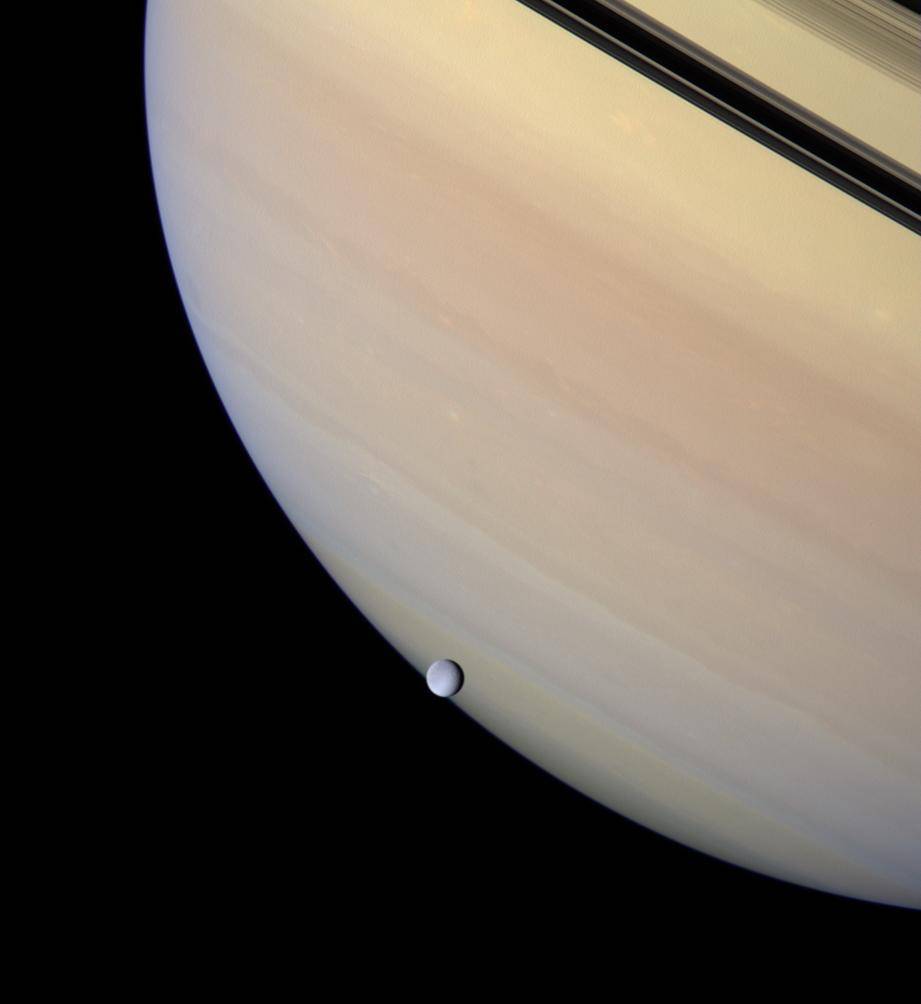
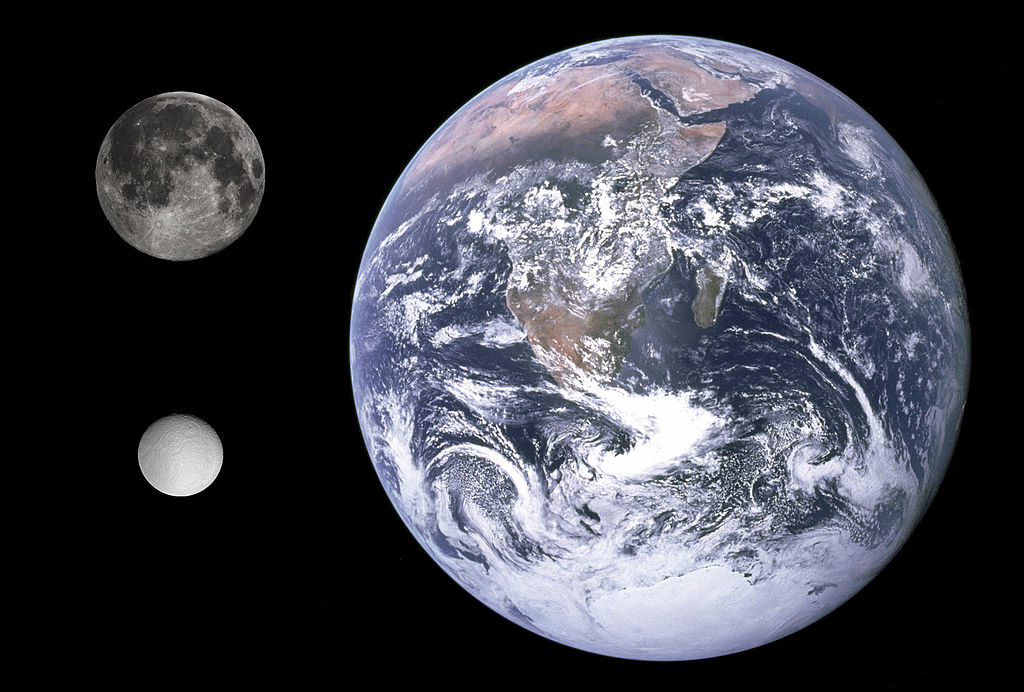
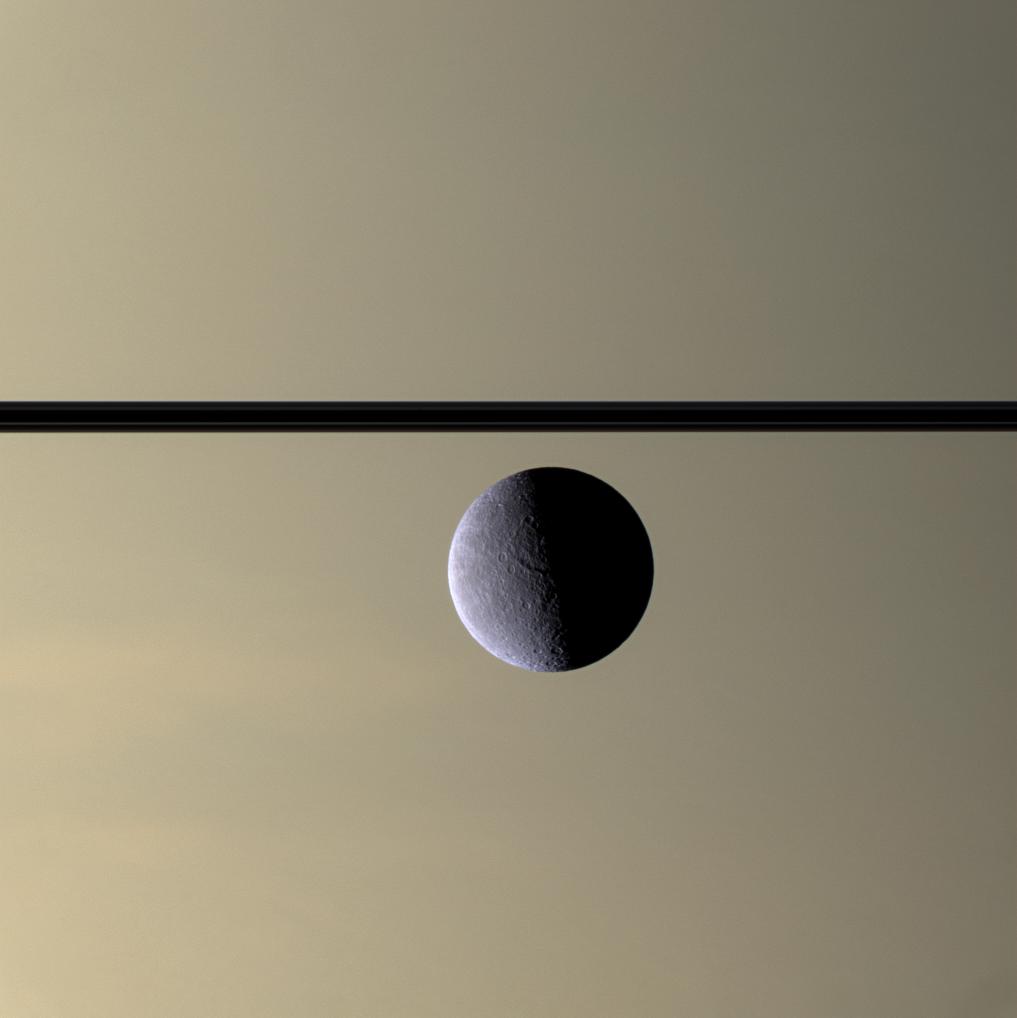
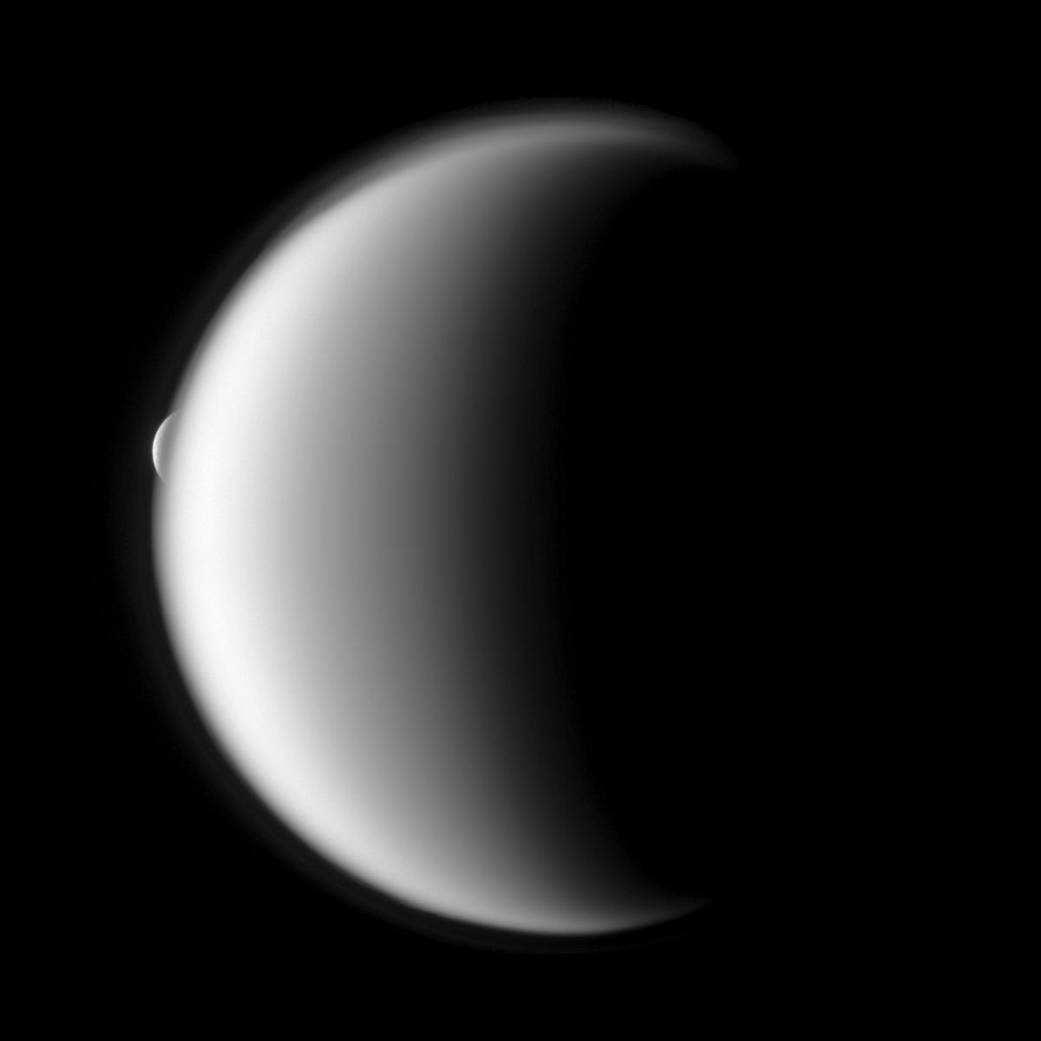
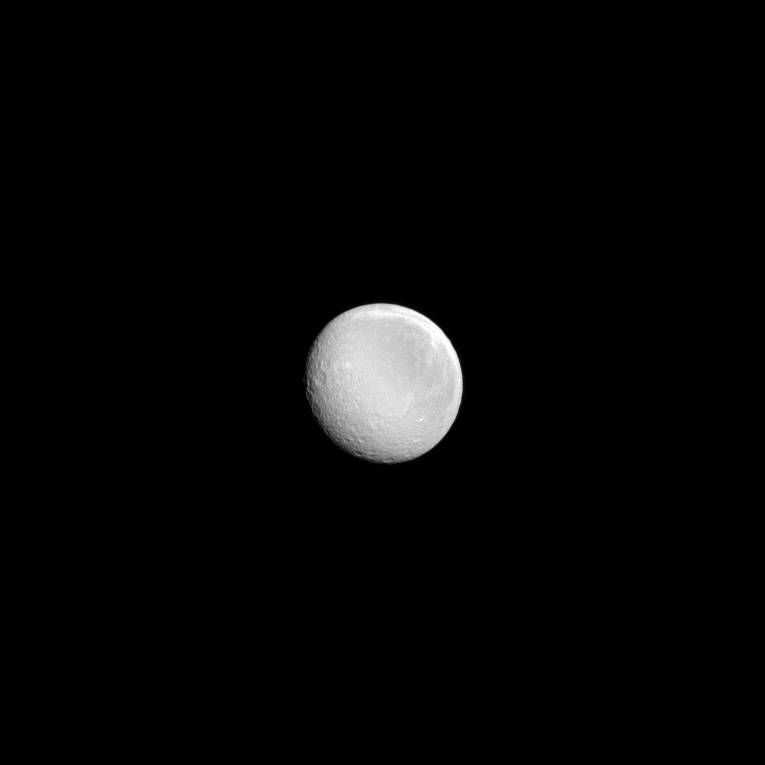
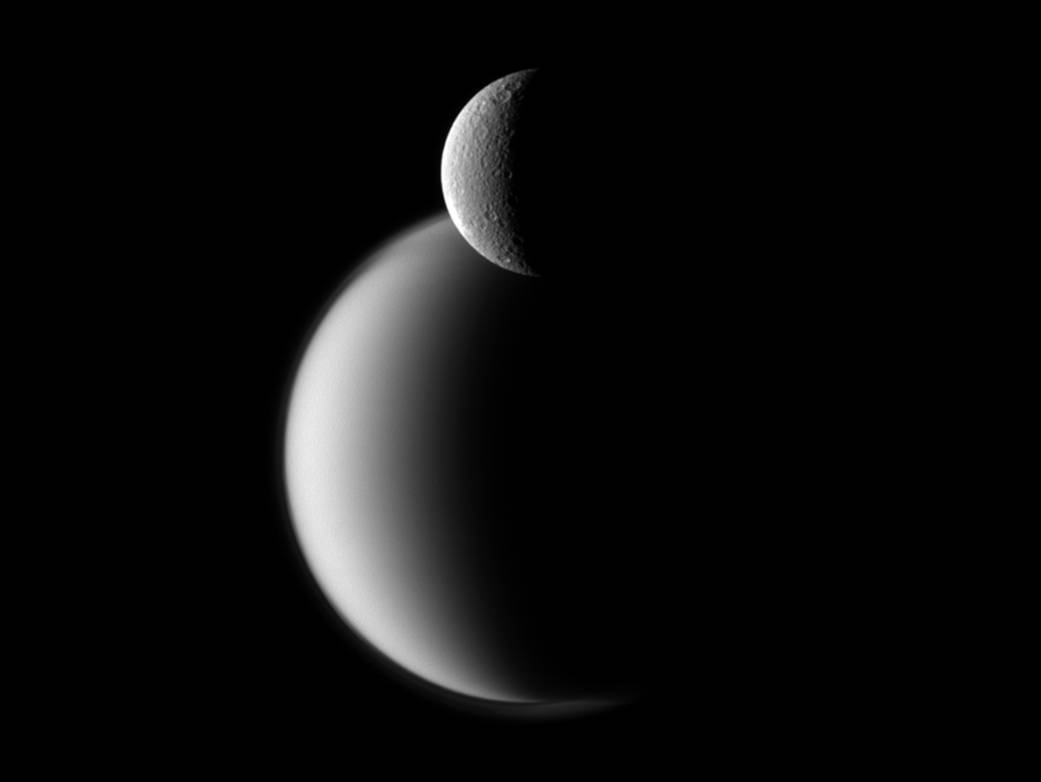



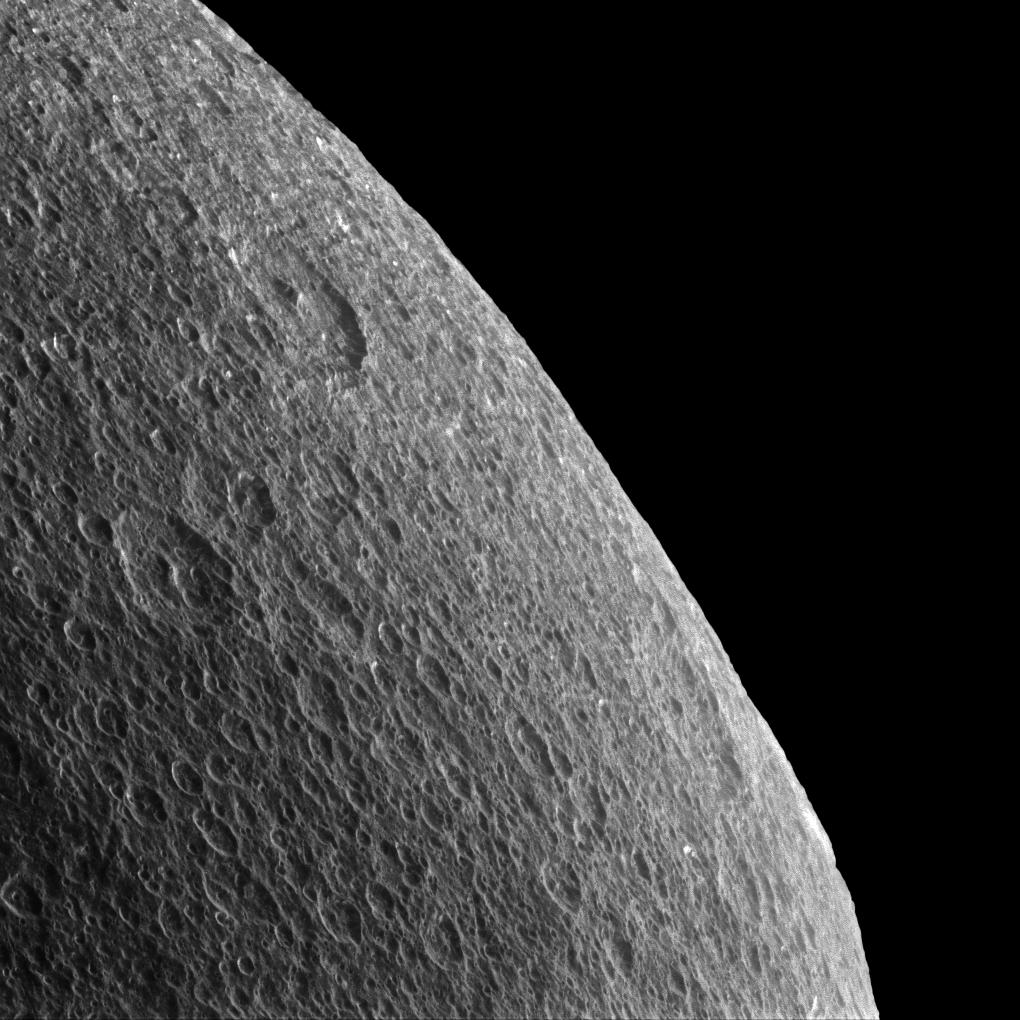

Transit
Diameter Comparison
Rhea
Rhea Emerges
A Distant 2nd
Two Moons
Splat
Cratered Globe
Rhea's SLight Discoloured Side
Irregular Forces
Rough Surface















